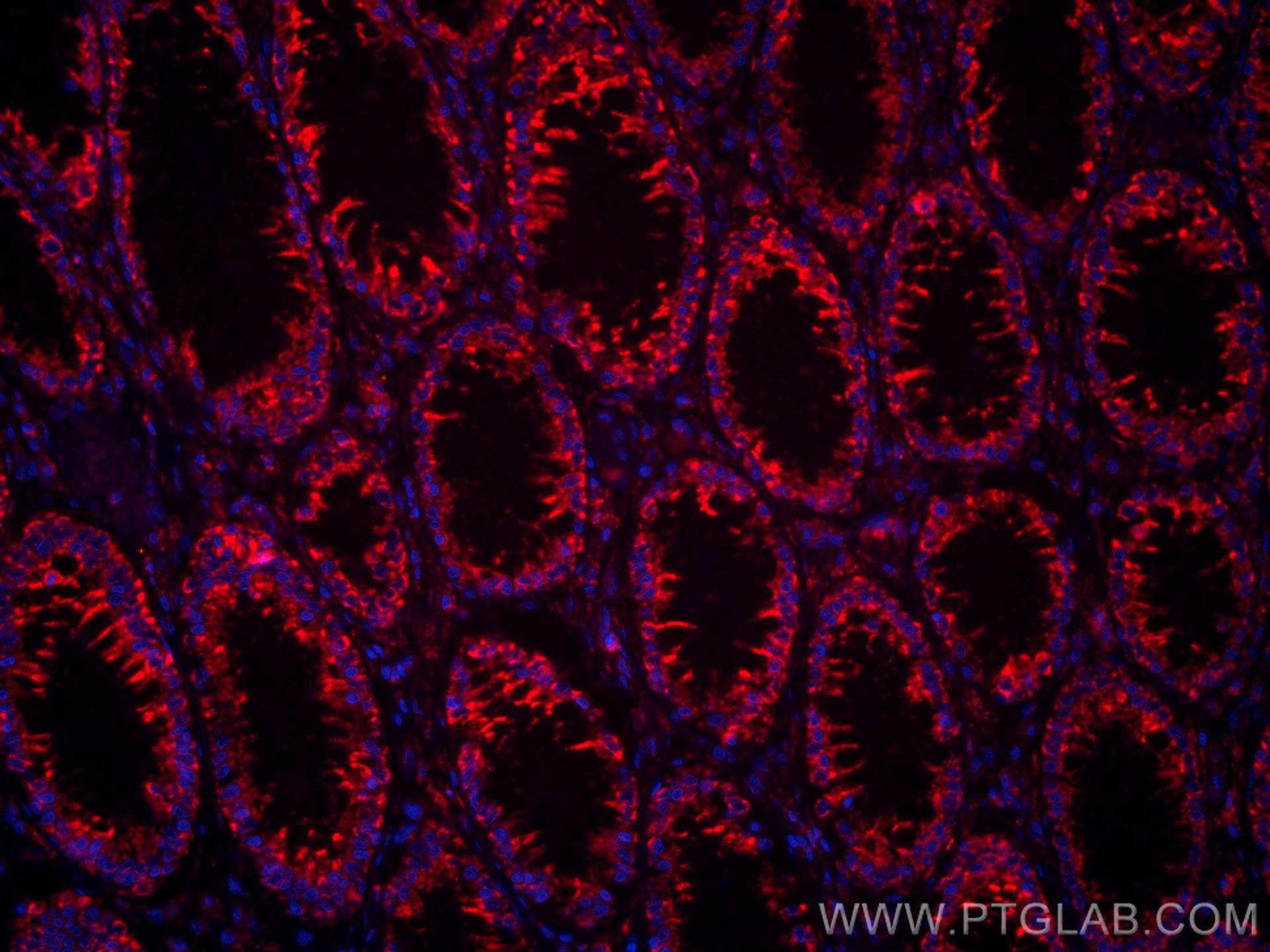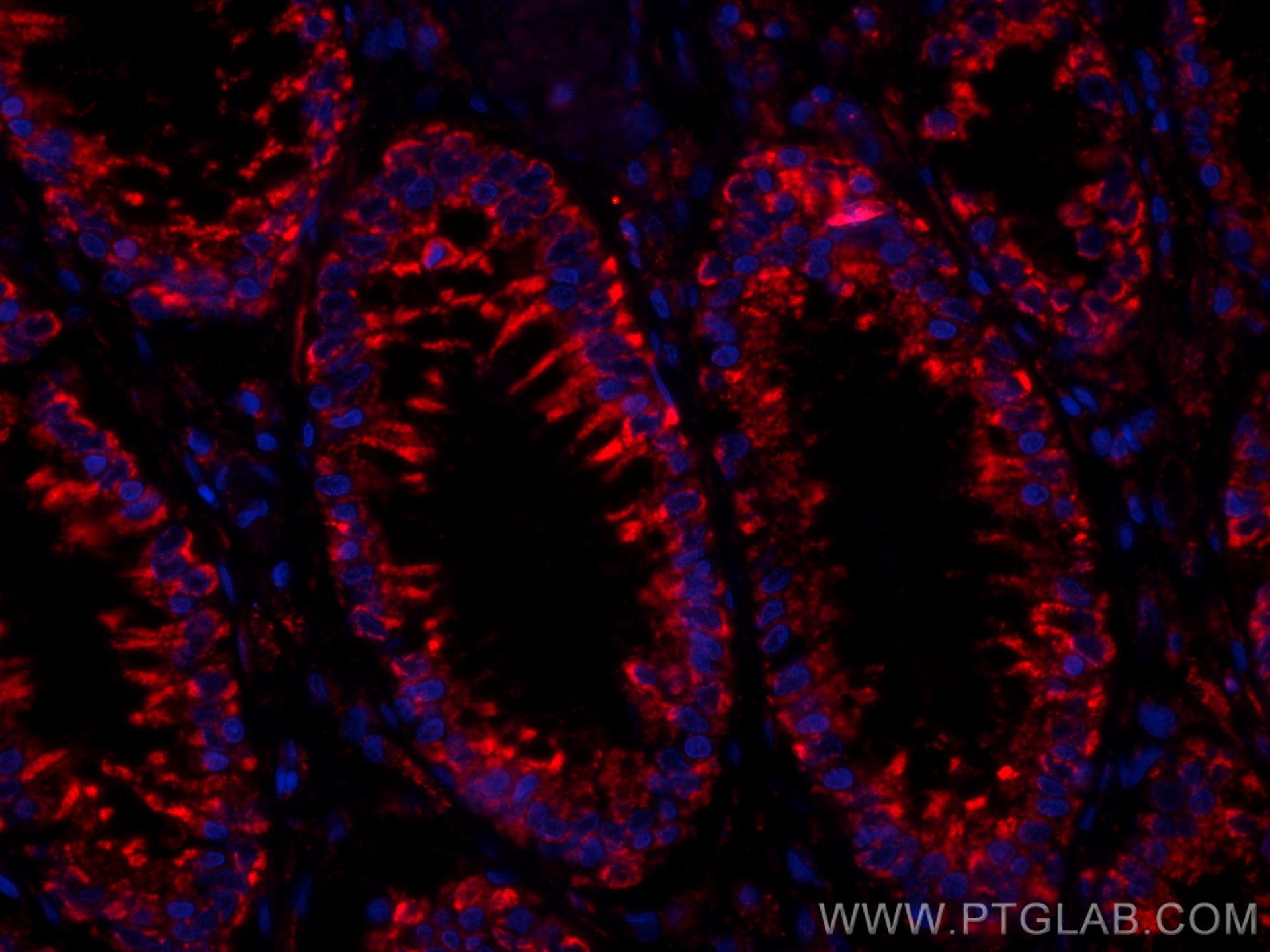Anticorps Monoclonal anti-Annexin A10
Annexin A10 Monoclonal Antibody for IF
Hôte / Isotype
Mouse / IgG2a
Réactivité testée
Humain, porc, souris
Applications
IF
Conjugaison
CoraLite®594 Fluorescent Dye
CloneNo.
1A7A11
N° de cat : CL594-66869
Synonymes
Galerie de données de validation
Applications testées
| Résultats positifs en IF | tissu de cancer du côlon humain, |
Dilution recommandée
| Application | Dilution |
|---|---|
| Immunofluorescence (IF) | IF : 1:50-1:500 |
| It is recommended that this reagent should be titrated in each testing system to obtain optimal results. | |
| Sample-dependent, check data in validation data gallery | |
Informations sur le produit
CL594-66869 cible Annexin A10 dans les applications de IF et montre une réactivité avec des échantillons Humain, porc, souris
| Réactivité | Humain, porc, souris |
| Hôte / Isotype | Mouse / IgG2a |
| Clonalité | Monoclonal |
| Type | Anticorps |
| Immunogène | Annexin A10 Protéine recombinante Ag27098 |
| Nom complet | annexin A10 |
| Masse moléculaire calculée | 37 kDa |
| Poids moléculaire observé | 37 kDa |
| Numéro d’acquisition GenBank | BC007320 |
| Symbole du gène | ANXA10 |
| Identification du gène (NCBI) | 11199 |
| Conjugaison | CoraLite®594 Fluorescent Dye |
| Excitation/Emission maxima wavelengths | 588 nm / 604 nm |
| Forme | Liquide |
| Méthode de purification | Purification par protéine A |
| Tampon de stockage | PBS avec glycérol à 50 %, Proclin300 à 0,05 % et BSA à 0,5 %, pH 7,3. |
| Conditions de stockage | Stocker à -20 °C. Éviter toute exposition à la lumière. L'aliquotage n'est pas nécessaire pour le stockage à -20oC Les 20ul contiennent 0,1% de BSA. |
Informations générales
ANXA10, member of the Annexin family, is a calcium-and-phospholipid-binding protein. It is implicated in multiple physiological processes, including growth regulation, cell division, apoptosis, and differentiation. ANXA10 was recently observed to be upregulated in Barrett's esophagus, oral cancers, pancreatic cancer and colon cancer.
Protocole
| Product Specific Protocols | |
|---|---|
| IF protocol for CL594 Annexin A10 antibody CL594-66869 | Download protocol |
| Standard Protocols | |
|---|---|
| Click here to view our Standard Protocols |



